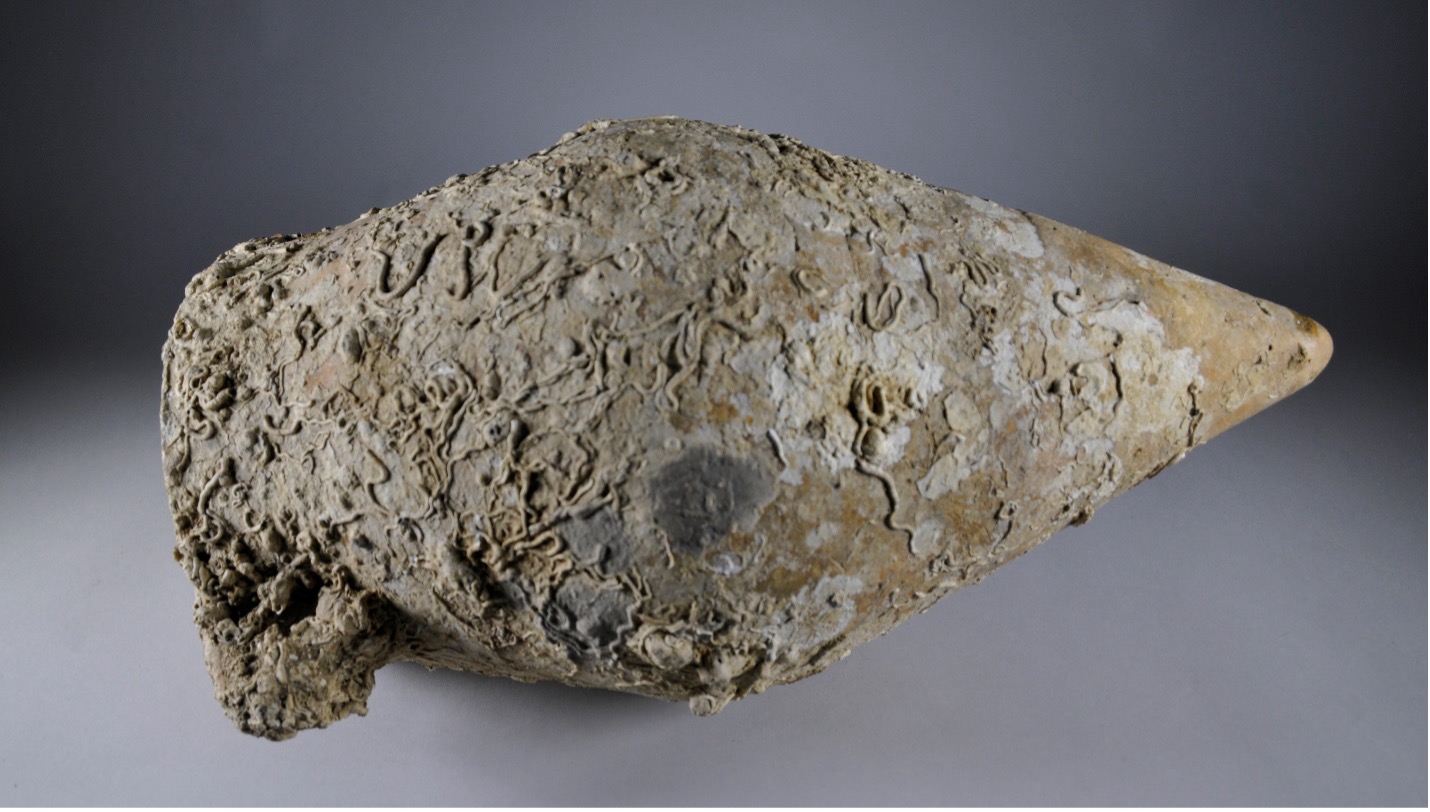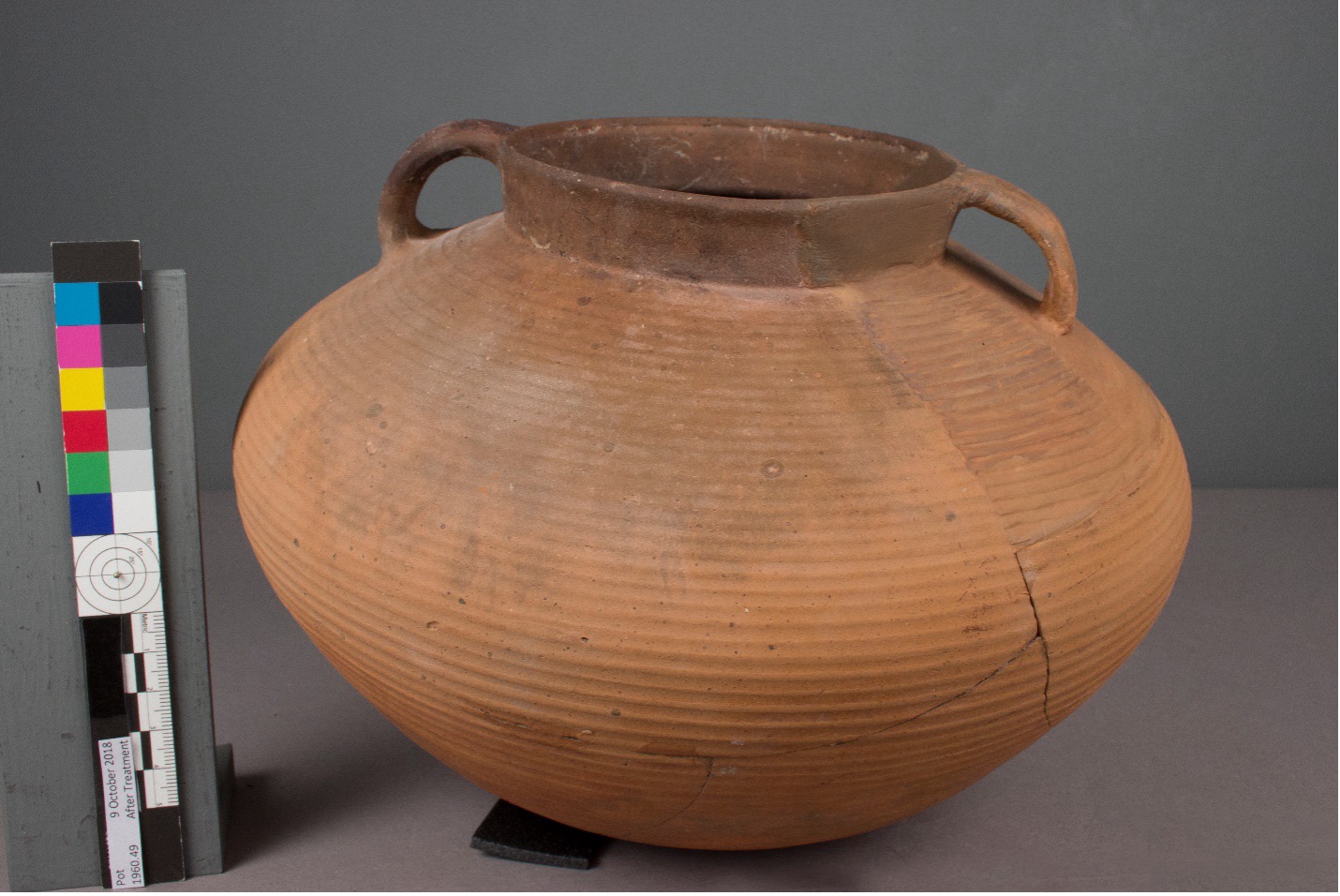

Sometimes, the story around an object is more interesting than the object itself. Edwin Albert Link (1904–1981) was an American inventor and entrepreneur who held over 25 patents for aeronautic, navigational, and oceanographic technologies. By 1954, Link had turned his attention to underwater archaeology. As part of this work, Link designed the vessel Sea Diver II for underwater archaeology and recovery. It was equipped with an underwater television camera, jet hoses to clear away mud from the ocean floor, and a combination diver’s decompression chamber and diving bell that allowed divers to descend to a depth of 40 feet.
On June 15, 1960, Sea Diver II arrived at Caesarea Maritima in Israel as part of a licensed expedition sponsored by the American-Israel Society and Princeton Theological Seminary. On staff of the expedition was Immanuel Ben-Dor, professor of Biblical Archaeology at the Candler School of Theology at Emory University. The purpose of the expedition was to explore the underwater remains of the ancient port of Caesarea. Local fishermen had been finding amphora and other pottery in the waters dating from the second millennium BCE through the fifteenth century CE. The archaeologists in the Link expedition concluded this material, such as our Achaemenid jar, was deposited on the ocean floor as the result of shipwrecks and material thrown overboard to lighten the loads of ships trading in the eastern Mediterranean.
As part of the same expedition, The Reef Diver, a smaller version of Sea Diver II, was taken to Tiberias, Israel to explore the Sea of Galilee. The freshwater lake was used extensively in ancient times for trading and fishing. While out on the water one day, the Reef Diver developed engine trouble and stalled. While waiting for help to arrive, the divers went into the water to look around. Almost immediately, they saw the rims of two vessels sticking out of the mud and started to excavate them. The rims belonged to two intact Roman cooking pots dating to the first century CE. Ultimately, seven intact pots were found along with 22 other cooking pots which were ultimately reconstructed. None of the pots recovered show signs of use. This, coupled with the fact they were found alongside two anchors, led the Link archaeologists to hypothesize they may be the remains of a ship that sunk while carrying new pottery across the Sea of Galilee.
Link spent the rest of his life developing oceanographic technology, including the Deep Diver which was the first small submersible divers could enter and leave while underwater. In 1973, Link’s son died when the small submersible he was on became stuck in debris off the coast of Key West. The tragedy motivated Link to develop a remotely operated device which could free small submersibles trapped under water.
Because of Immanuel Ben-Dor’s participation, we are lucky enough to care for several objects uncovered by the Link Marine Expedition of 1960. The seemingly humble vessels found can help archaeologists reconstruct maritime trade activities in the ancient world. For us, the vessels also help tell the stories of Edwin Link’s fascinating life.




